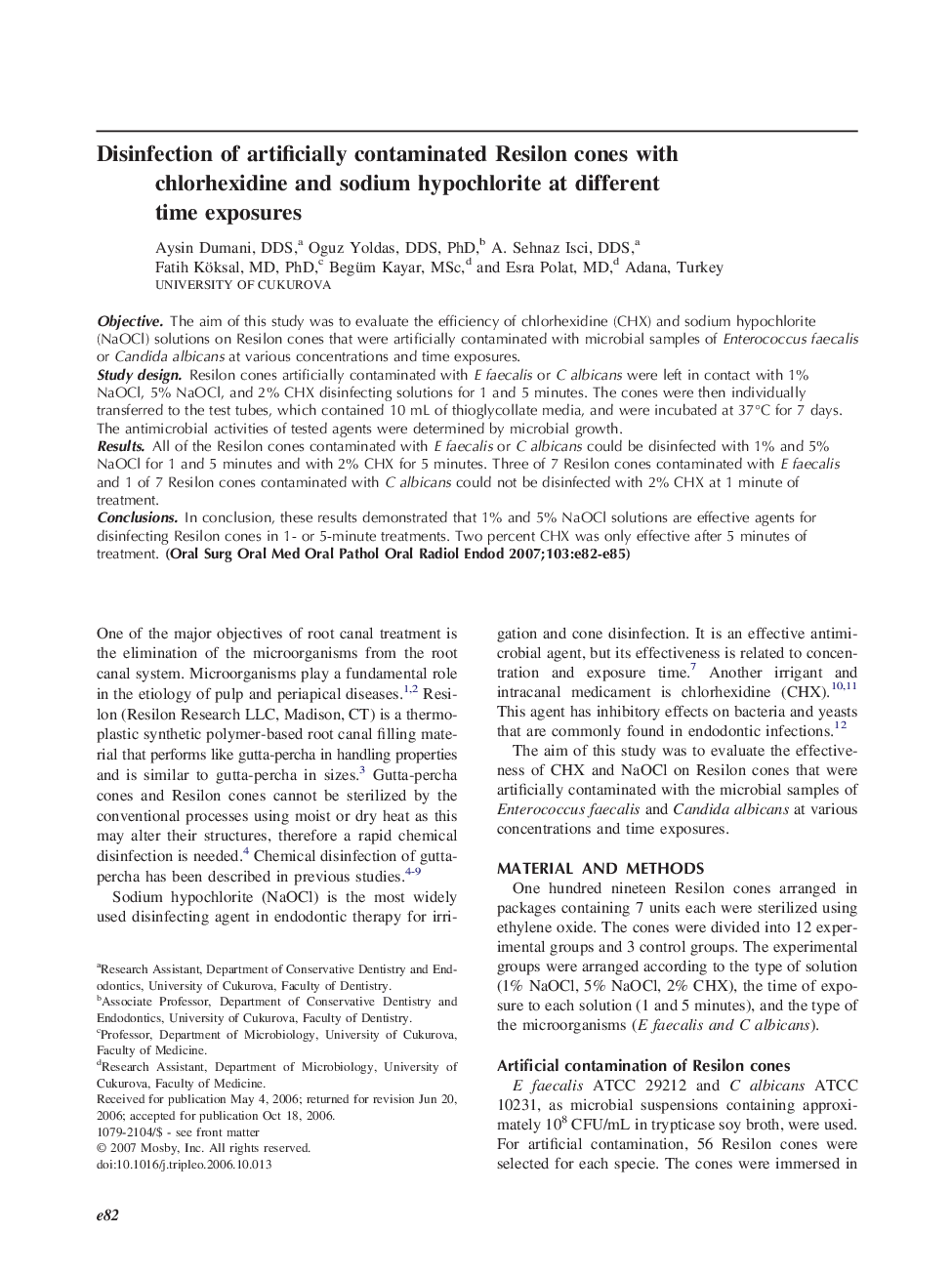| Article ID | Journal | Published Year | Pages | File Type |
|---|---|---|---|---|
| 3169548 | Oral Surgery, Oral Medicine, Oral Pathology, Oral Radiology, and Endodontology | 2007 | 4 Pages |
ObjectiveThe aim of this study was to evaluate the efficiency of chlorhexidine (CHX) and sodium hypochlorite (NaOCl) solutions on Resilon cones that were artificially contaminated with microbial samples of Enterococcus faecalis or Candida albicans at various concentrations and time exposures.Study designResilon cones artificially contaminated with E faecalis or C albicans were left in contact with 1% NaOCl, 5% NaOCl, and 2% CHX disinfecting solutions for 1 and 5 minutes. The cones were then individually transferred to the test tubes, which contained 10 mL of thioglycollate media, and were incubated at 37°C for 7 days. The antimicrobial activities of tested agents were determined by microbial growth.ResultsAll of the Resilon cones contaminated with E faecalis or C albicans could be disinfected with 1% and 5% NaOCl for 1 and 5 minutes and with 2% CHX for 5 minutes. Three of 7 Resilon cones contaminated with E faecalis and 1 of 7 Resilon cones contaminated with C albicans could not be disinfected with 2% CHX at 1 minute of treatment.ConclusionsIn conclusion, these results demonstrated that 1% and 5% NaOCl solutions are effective agents for disinfecting Resilon cones in 1- or 5-minute treatments. Two percent CHX was only effective after 5 minutes of treatment.
